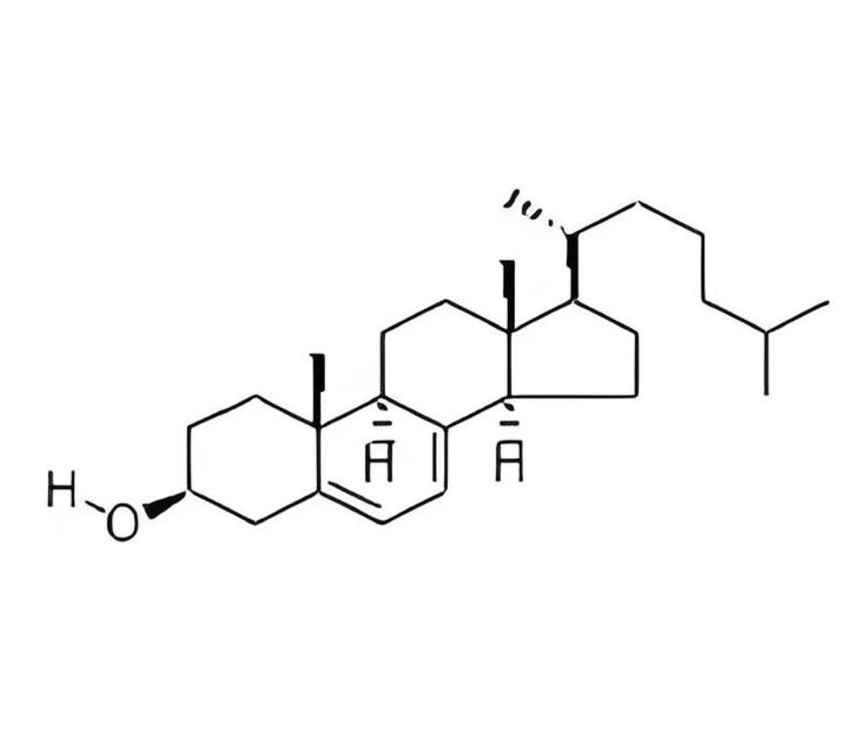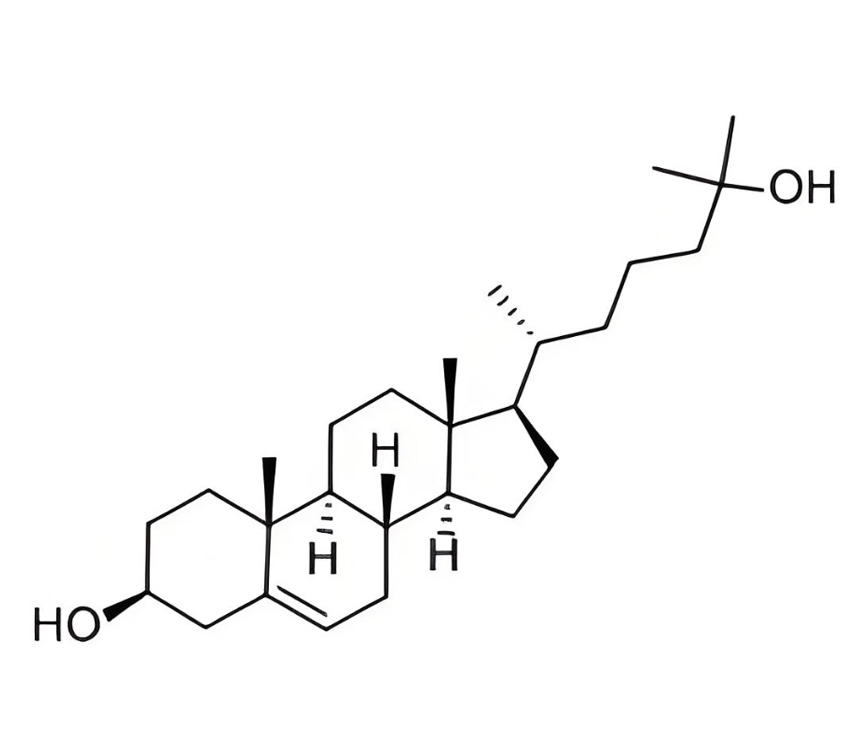Introduction to 7-Dehydrocholesterol
Dehydrocholesterol, also known as 7-dehydrocholesterol, is a derivative of cholesterol with some unique characteristics and important biological functions. The following is an introduction to dehydrocholesterol:
1. Chemical structure
Chemical formula: C₂₇H₄₄O
Structural characteristics: Dehydrocholesterol has a steroidal structure similar to cholesterol, but has two additional double bonds in its chemical structure, specifically at the 7th and 8th positions (7-position). This structural difference gives it a special role in biological functions and drug synthesis.
2. Biological function
Vitamin D synthesis precursor: Dehydrocholesterol is an important precursor for the synthesis of vitamin D. In the skin, dehydrocholesterol is converted into vitamin D3 (cholecalciferol) under the action of ultraviolet radiation. This process is essential for the normal synthesis of vitamin D, which helps calcium absorption and bone health.
3. Clinical relevance
Genetic diseases: Abnormal dehydrocholesterol metabolism is associated with some genetic diseases, such as congenital adrenal hyperplasia (CAH), which may lead to the accumulation of dehydrocholesterol in the body.
Health monitoring: Monitoring the level of dehydrocholesterol in the body can help assess the synthesis status of vitamin D and bone health.
4. Stability and storage
Chemical stability: The chemical properties of dehydrocholesterol make it relatively stable under appropriate conditions, but it should be kept away from light and high temperature to prevent it from decomposing or converting into other compounds.
Storage conditions: It is usually stored in a cool and dry place, away from light and moisture to maintain its stability and activity.
Dehydrocholesterol has a wide range of applications in vitamin D synthesis, pharmaceutical industry, biochemical research and nutritional applications. It is not only a key precursor of vitamin D, but also plays an important role in drug synthesis and medical research. Dehydrocholesterol has important applications in organisms and the pharmaceutical field.
1. Vitamin D synthesis
Precursor role: Dehydrocholesterol is a key precursor for the synthesis of vitamin D. In the skin, dehydrocholesterol is converted into vitamin D3 (cholecalciferol) under the action of ultraviolet (UVB) radiation. This process is essential for the synthesis of vitamin D, which helps with calcium absorption and bone health.
Supplement production: Dehydrocholesterol is used as a raw material for the production of vitamin D supplements. Vitamin D supplements are widely used to prevent and treat vitamin D deficiency, osteoporosis, and other health problems associated with vitamin D deficiency.
2. Medical research
Metabolism research: Studies on the role of dehydrocholesterol and its metabolites in vitamin D synthesis and cholesterol metabolism help to understand the mechanisms of these biological processes. Studies on dehydrocholesterol can provide important information about the vitamin D synthesis pathway and related diseases (such as vitamin D deficiency and osteoporosis).
Genetic disease research: Abnormal metabolism of dehydrocholesterol is associated with some genetic diseases, such as congenital adrenal hyperplasia (CAH). Studying the mechanisms of these diseases can help develop new diagnostic and therapeutic methods.
3. Pharmaceutical industry
Drug synthesis: Dehydrocholesterol is used as an intermediate for certain drugs in the pharmaceutical industry. For example, it can be used to synthesize steroid drugs, hormones, and other biologically active compounds.
Drug development: Dehydrocholesterol and its derivatives are used as research materials in drug development to develop new drug forms and treatments.
4. Biochemical experiments
Standardized reagents: Dehydrocholesterol is used as a standardized reagent in biochemical experiments to test and verify the accuracy and reliability of experimental methods.
Biomarker research: When studying biomarkers of cholesterol and vitamin D, dehydrocholesterol, as one of the basic components of the analysis, can help identify and measure the levels of relevant biomarkers.








